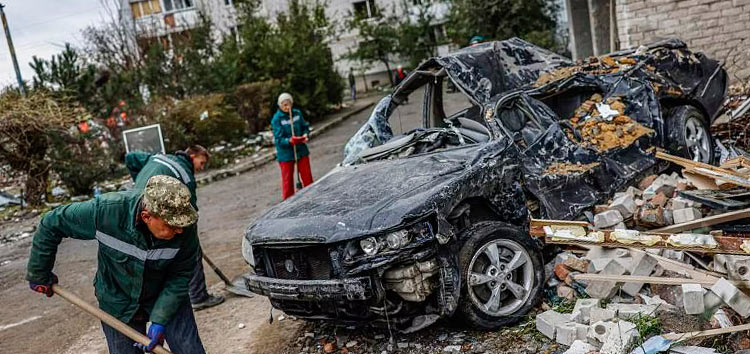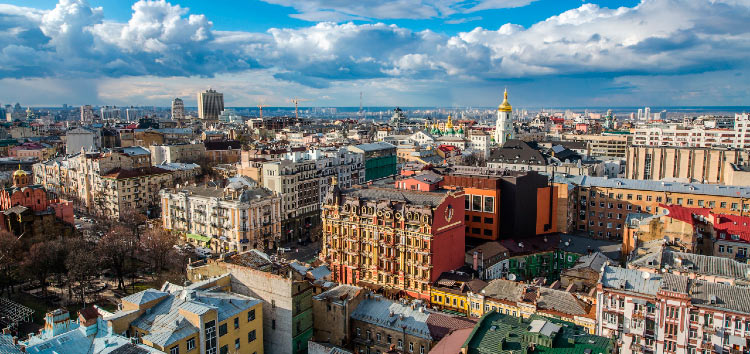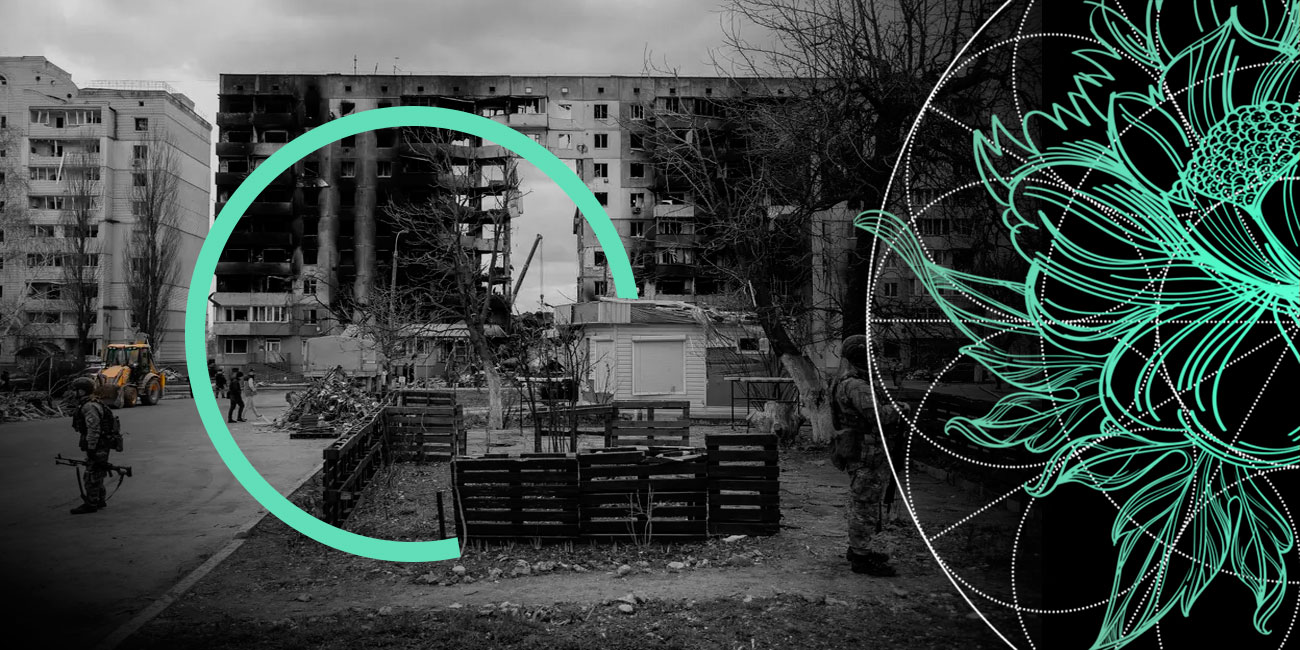Since Russia invaded Ukraine in February 2022, it has become impossible to get insurance coverage for war-related risks in Ukraine. Yet, a healthy private insurance market is crucial for Ukraine’s sustainable economic recovery. The international guarantee scheme for war-risks insurance is needed. It should be governed by a special vehicle with robust corporate governance, funded by international donors, and implemented with a consortium of global reinsurance companies to ensure investor confidence.
Enabling Ukraine’s recovery and reconstruction will require ambition and innovation from industry and governments alike. Despite the ongoing war in Ukraine, attention is turning to how to rebuild the country – learning from historical precedents that warn of the risk of winning the war, only to lose the peace that follows.
According to Marsh McLennan, estimates suggest over $1trn of investment will be required, much of it expected to come from the private sector.
Yet this massive investment will not be feasible if investors cannot adequately protect themselves from war risk (see Insured Losses for Ukraine War).
The insurance industry has never habitually covered war risks

The insurance industry – in Ukraine or elsewhere – has never habitually covered war risks at anything approaching the scale required. Even once the current “hot” phase of war has ended or diminished significantly, an elevated degree of risk will remain in the eyes of private insurance markets for a number of years (see Cyber Warfare in Ukraine).
Currently, there is virtually no war-risk insurance available to provide cover for investments or property in Ukraine.
Marsh McLennan assisted the UK and Ukrainian governments in assessing requirements and options for war-risk insurance to support the reconstruction and recovery of Ukraine.
Importantly, this would depend on the provision of a government backstop that would likely need to be provided by G7+ governments (see War Exclusions in Cyber Insurance are Centre Stage as Re/Insurers).
Our work highlighted the role of a war-risk pool in creating the conditions for the functioning of the conventional property insurance market, which itself would enable investment to flow at the scale required.
Julian Enoizi is Europe CEO at Guy Carpenter
Establishing such a scheme would require the commitment of international governments and industry. We do not believe that government appetite yet exists for the development of such a scheme.
War risk insurance for Ukraine

Russia’s ongoing invasion has had a devastating impact on the Ukrainian economy, with Russian forces deliberately targeting businesses and infrastructure while blockading Ukraine’s ports in a bid to bankrupt the country, said Yulia Svyrydenko, a First Vice Prime Minister of Ukraine and simultaneously Minister of Economic Development and Trade of Ukraine.
In order to fight back on the economic front, Ukraine must encourage domestic and international investment. This is why greater war risk insurance coverage is so important for Ukraine (see How Russian War in Ukraine Impacts for Global Insurance Sector?).
There has been significant progress toward expanded insurance coverage for businesses since the onset of Russia’s invasion almost twenty months ago
Yulia Svyrydenko, First Vice Prime Minister of Ukraine
The World Bank’s Multilateral Investment Guarantee Agency (MIGA) recently confirmed a $9.1 million ten-year insurance package for the M10 industrial park project in western Ukraine’s Lviv region. Once construction is complete, the facility is expected to create 3,000 new workplaces and will provide the surrounding region with a significant economic boost.
This insurance agreement is partially financed by donor countries through the Support for Ukrainian Reconstruction and Economic Enhancement (SURE) trust fund, which is overseen by MIGA.
It is widely regarded as a showcase for other investors that highlights the investment insurance instruments already available in Ukraine.
Government support for war risk insurance

In addition to MIGA, the US International Development Finance Corporation (DFC) is actively engaged in the issue of war risk insurance for Ukraine, with several applications worth hundreds of millions of dollars currently in the pipeline.
Meanwhile, the German government has recently extended export credit guarantees to Ukraine, broadening the scope of support for companies operating in Ukraine, and French export credit agency Bpifrance Assurance Export is now offering insurance coverage to French companies investing in Ukraine.
To accomplish this, France set up a system for investment insurance with Ukraine. The policy insures investors or credit institutions that lend money for investments. They will be safeguarded against property harm, unpaid debts, government seizure, etc. The insurance will cover up to 95% of investor assets or receivable losses.
Any company operating under French law that makes long-term investments abroad in either a new or existing company will have access to the insurance. Also, any bank that loans money to a foreign subsidiary.
Among other things, France is still talking with its partners to help Ukraine’s economy and implement new financial tools for its improvement.
For more than a year, Poland’s Export Credit Insurance Corporation KUKE has provided guarantees for the sale of goods in Ukraine. Thanks to this support, Polish exports to Ukraine increased by almost 55% in 2022.
Poland recently adopted legislation that will pave the way for a KUKE program covering the participation of Polish businesses in Ukraine’s reconstruction and recovery. Significantly, this legislation will make it possible to provide insurance cover to the Polish branches of international companies.
The expansion of war risk investment insurance in Ukraine
The expansion of war risk investment insurance in Ukraine has been publicly backed by G7 leaders, the European Commission, and a number of individual national export credit agencies.
The German, French, Italian, British, Swedish, and Japanese export credit agencies have already committed to participating in political risk insurance for their companies operating in Ukraine.
The European Bank of Reconstruction and Development (EBRD) is also in the process of establishing a new fund that will boost the local insurance market for property and trade risks, including insurance of goods in transit or stored in warehouses. This fund is expected to become operational in early 2024.
Looking ahead, another welcome step would be the establishment of expanded ECA programs to cover the risks incurred by Ukrainian investors. This would encourage the creation of joint enterprises.
War-risk insurance will not ensure the investment happens

The poor state of G7 public sector finances, still struggling after the pandemic, means it is inevitable the private sector will do much more of the financial heavy lifting as well as the infrastructure rebuild–and both will require insurance.
This has prompted Marsh McLennan to propose the creation of a multinational public-private partnership centred around a war risk pool that would be modelled along similar lines to terrorism pools which exist in Australia, France and the UK.
On its own war-risk insurance will not ensure the investment happens, but there is virtual unanimity that without such cover the investment will not be forthcoming. What is required is war-risk insurance on a scale never before contemplated
Crispin Ellison, Oliver Wyman’s public sector practice partner
With the bloody conflict still raging, Russia continuing to target Ukrainian infrastructure and no sign of a peace settlement, the eventual rebuild costs and timeframe remain highly uncertain.
The scorched earth devastation seen in cities such as Mariupol and Bakhmut, together with the continued destruction of infrastructure like the Russian-controlled Kakhovka Dam earlier this month, have prompted some to calculate the overall cost could eventually reach $1trn.
There are a number of obvious difficulties, as Guy Carpenter’s public sector practice head Julian Enoizi points out.
The first is that the industry is itself already impacted by the conflict with billions of dollars of losses and claims across a wide range of classes including aviation, credit, marine and political risk
The industry has never habitually covered war risks. The industry excludes war as standard and the specialist aviation and marine war markets are a fraction of the size required.
Before Russia’s February 2022 invasion, for example, the aviation war market was small–perhaps little more than a USD 100 million in annual gross written premum (GWP).
Underwriters have since scrambled to reprice the war risk
Underwriters have since scrambled to reprice the risk and sources estimate the Lloyd’s/London-centred market is probably now $600mn in GWP. Nonetheless, this is a fraction of the aggregate risk premium that (re)insurers would need to charge even if they had the capital (they don’t) to take on in full the risk of a mammoth, multi-year private sector-financed rebuild.
The lack of a vibrant domestic insurance industry is also an issue as it means (re)insurers can’t depend on local risk knowledge and mitigation expertise.
However, global specialty (re)insurers are showing a willingness to be responsive. Last year, for example, Marsh and Lloyd’s insurer Ascot developed a new marine facility to insure Ukrainian grain exports.
But there is a big difference between coverage for specific and relatively contained projects and a USD 1 trillion, 10-plus year rebuild of a European country on a scale not seen since America’s Marshall Plan after World War II.
The global P&C industry doesn’t have the collective balance sheet to take on the war risk
“The market alone cannot provide a solution. The insurance industry is not prepared to expose itself to the risk of insolvency by taking on war risks in Ukraine, even once the current ‘hot’ phase of war has ended but heightened war risk remains,” notes Ellison.
But the research undertaken by Marsh McLennan suggests (re)insurers are prepared to participate meaningfully if they are supported by “worst case” safety nets in the form of governmental backstops, either at a national or multinational level.
There is a consensus, that a public-private partnership model along the broad lines of the terrorist insurance pools that have been successfully used at national level in several countries, but which have never been expanded to share risk internationally.
International move to unlock war insurance for Ukraine investments

The European Bank for Reconstruction and Development (EBRD) was among international actors at the Ukraine Recovery Conference in London to sign a statement of intent on cooperating to relaunch the private insurance market in Ukraine, by working jointly with key market and public-sector stakeholders to develop a guarantee facility.
Russia’s war on Ukraine has all but closed this market, yet making insurance available to private investors is key to ensuring resilience in wartime and a successful reconstruction later.
Likewise, the United Kingdom – host of the Ukraine Recovery Conference 2023 – is issuing a statement on insurance, supporting initiatives already underway, including the EBRD pilot, and setting out guiding principles to inform them.
Insurance is a crucial area of endeavour to support Ukraine’s economic resilience
While international finance to Ukraine thus far has largely been from countries and international organisations, given the enormous needs of reconstruction the private sector will also need to play a major role going forward.
The challenge – as set out by the signatories to today’s Statement of Intent’s signatories, the EBRD, European Commission, Norway, Switzerland, TaiwanBusiness – EBRD Technical Cooperation Fund and Ukraine – is providing the right insurance for these private-sector investors.
Agreeing that a public-private partnership approach is necessary to develop the market at the required reasonable scale, the signatories agreed to work together to achieve this goal, in line with the principles to be set out in the closing UK statement at the conference.
The signatories will explore the possibility of cooperating on establishing a Ukraine Recovery Guarantee Facility, in partnership with leading international private-sector institutions, aiming to facilitate the provision of private-sector insurance against war-related risks in Ukraine. This would initially focus on trade but have the potential to expand to other segments of the insurance market.
They will also explore leveraging donor support to re-engage Ukraine domestic insurance and reinsurance industries and their global counterparts, as well as creating a platform for dialogue among key public and private insurance market stakeholders.
Principles to create an efficient war risks insurance scheme

According to Centre for Economic Strategy, the following set of principles should help create an efficient war-risks insurance scheme that will enable Ukraine to achieve faster, inclusive, and sustainable economic recovery driven by foreign and local investments.
- An international guarantee scheme for war-risks insurance in Ukraine should be governed by a special vehicle with robust corporate governance; funded by international donors as a money pool to carry war-related risks; and implemented by a global reinsurance companies’ consortium to ensure investor confidence. The Israeli approach, where the state covers the damages caused by hostile actions (e.g. terrorism), acts of war by a foreign army, and other damages caused by acts of war by its own Defence Force, is less relevant for Ukraine because of the huge difference in sovereign risk (the credit rating of A+ by Fitch for Israel versus CC for Ukraine). State guarantee from the Ukrainian government would not be enough to gain the trust of foreign investors. Given the incalculable and non-reinsurable nature of the risk, private markets are also not an option. Therefore, the only viable approach would be to seek trustworthy guarantees from third-party entities, such as G7+ governments, to initiate market operations. Such guarantees would also help keep insurance premium rates affordable since, under market terms, the cost of war-related insurance in Ukraine would be prohibitively high for most companies. Additionally, a mechanism for claims against Russia should be established, allowing guarantor countries to recover their funds from the responsible party.
- The insurance should exclusively cover the risks associated with war, such as physical damage to goods and assets, hostile occupation, and contract obligation breaches for war-related reasons, including bank loans, goods, or services supply. It should cover not only total losses of property but also damages of a moderate scale, which is not currently the case (Bennett 2023). Commercial risks, the risk of assets nationalisation and/or capital controls imposition by the Ukrainian state, as well as any risks of sovereign/quasi-sovereigns not honouring financial obligations, should be excluded from this scheme.
- The insurance should be equally accessible to both Ukrainian and international investors, with coverage for all sizes of investments, large and small. While coverage at the initial stages might be prioritised and channelled towards strategic industries, the goal is to open the market to all players, including SMEs, who can purchase insurance policies from their local suppliers.
- The participation of private insurance companies will be necessary. The scheme should not rely on a single state-owned insurance company, as its capacity would be insufficient to cover all the demand, while governance and corruption-related issues might undermine its credibility. Local insurance companies could broker standardised SME deals, while larger international ones could approach large companies and PPP projects on an individual basis. Proper oversight made possible by the pre-war ‘split’ reform, where the National Bank of Ukraine became the insurance market’s supervisor, would be crucial.
- Ukrainian government leadership in the process would be valuable at the conceptual stage, when the eligibility criteria for investors for the insurance and financial service providers for accession to the international guarantee scheme would be determined. The Ukrainian government should also be involved in all the stages of negotiations and scheme design. Supervision over local insurance companies during the implementation stage and ensuring transparency and access to information is also the Ukrainian counterpart’s task. However, the funds and their direct management should be out of the government’s hands to eliminate any possible sovereign-related risks which might affect investors’ trust.
…………….
Reviewed by Oleg Parashchak — CEO & Owner Finance Media Holding
QUOTES: Julian Enoizi — Europe CEO at Guy Carpenter, Yulia Svyrydenko — First Vice Prime Minister of Ukraine and simultaneously Minister of Economic Development and Trade of Ukraine, Crispin Ellison — Oliver Wyman’s public sector practice partner








